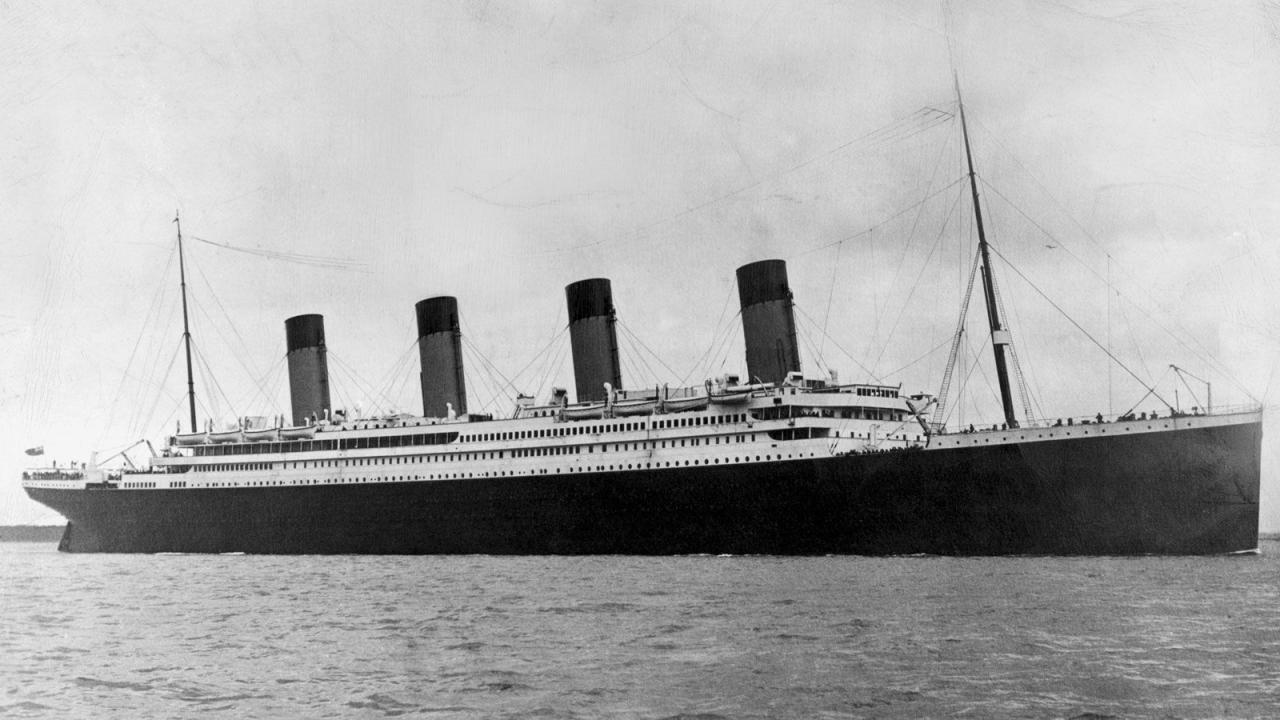
Even before the blockbuster movie came along, the history of the Titanic was fascinating to many people. The sinking of the unsinkable ship on its maiden voyage after hitting an iceberg has spawned many books and movies. Some of the wealthiest and most famous people of the time, as well as some of the poorest, were on the ship at the time of its sinking, and the difference in the treatment of the passengers is mesmerizing.
Ever since man first sailed the sea, icebergs have been a hazard. An online database of ships colliding with ice lists almost 600 incidents, and the list is still growing as research into old records continues. One of the first recorded occurred before 1761 in which a ship traveling from Virginia to Glasgow struck ice and the crew had to be rescued by a passing ship.
White Star Lines, the shipping company that would own the Titanic, had been in shipping in the North Atlantic since 1870 or so. All her ships were built by Harland and Wolff builders, in an exclusive agreement where the builder would build only White Star ships.
There were three main shipping lines at the time, and one focused on speed, one on luxury, and White Star, who focused on size. She liked to build and operate big ships, so when ordering the latest set of ships, White Star directors ask for, and received plans for what they were hoping for would be the largest, and one of the most luxurious passenger liners of the day.
When the Olympic class ships were designed, of which the Titanic was the second example built, they were intended to be the largest ocean liners in the world. Titanic was launched in 1912, claiming the title of largest in the world from her sister, the Olympic, launched less than a year earlier.
The RMS Titanic was 882 feet long, and carried 2,435 passengers and 892 crew. She traveled at 21 knots, equivalent to 24 mph. Her sea trials, conducted on April 2, 1912, consisted of 12 hours of putting the ship through its paces, traveling at different speeds and maneuvers, and coming to an emergency stop.
Regulations of the time required all ships over 10,000 tons to carry 16 lifeboats able to accommodate 990 people. However, they were obviously not prepared for the size of Titanic at over 45,000 tons. Titanic was designed with room for lifeboats for 4,000 people, but management at White Star Line decided to keep only 20 lifeboats onboard, reducing her capacity to 1,178 people, less than a third of the amount needed for a fully booked ship.
Titanic was ready to leave on her maiden voyage on April 10, 1912. On April 14, 1912, she was running near maximum speed, although she had gotten word of sea ice along the way from ships that were in front of her. Upon receiving the first two warnings, Captain Smith changed her course to be more to the south, but for some reason the rest of the messages never made it to the Captain. The wireless operators had some trouble with faulty equipment, and were also busy relaying messages for the passengers.
Late on the night of April 14th, a lookout in the crow’s nest rang the bridge to report seeing ice straight ahead. First Officer Murdoch immediately ordered “Hard a’starboard”, which turns the tiller to the right, causing the ship to turn left. He also ordered “Full Astern”, telling the engine room to begin running the engines in reverse.
Running the engines in reverse may have been a mistake. There is a time delay in the action, and the ship probably was less responsive in turning during this time. If left to power forward, the ship may have turned faster.
In any event, the ship hit the iceberg indirectly off the forward right side of the ship. Standing on deck, there was little evidence of a collision, except for some ice that had fallen from the iceberg to the deck. Below decks, it was thought that the iceberg had opened up a 300 foot gash, but recent looks at the wreckage have determined that the gaps were relatively small. The iceberg appears to have torn into the side of the ship in several areas, while in others the pressure popped rivets and the seams came apart letting in the water.
The Titanic was built with an eye to safety, and was divided into 16 compartments, with a bulkhead, or wall, running the width of the ship. Each could be sealed with watertight doors from the bridge. However, the bulkheads were not sealed at the top, they just extended a distance above the waterline. This meant if several compartments in the front or the back of the ship were pierced and filled with water, that area would settle lower causing the water level to rise and flow over the top of the bulkhead, gradually spilling into each compartment in sequence.
Since the Titanic was pierced in the bow, which is exactly what happened. Titanic was holed in five compartments, one too many, and started sinking. After 45 minutes, those in charge aboard the ship knew they had less than two more hours afloat.
Due to the time of the season and shipping problems, there were only 1,320 passengers and 892 crew members on board, but this was still too many for the amount of lifeboats being carried. The Captain sent crew members were from cabin to cabin, relaying word that they were to muster on deck, and ordering the lifeboats to be uncovered. The Captain knew, though, that there were not enough lifeboats to save everybody, and gave no clear orders about evacuating. Some of the passengers were unaware how serious the problem was, because the collision had hardly been felt in most of the ship, and many of the crew were in the same situation.
Because of this lack of leadership, and the lack of training of the crew, it was next to impossible to achieve a decent evacuation of the ship. Sea trials for the Titanic had taken place only 12 days before, so all of the crew aboard, even if experience on other ships, were not used to working together, and were not familiar with Titanic.
So lifeboats were lowered away. Some were overboard relatively quickly, with the first being filled only 45 minutes aver the collision, while other were not lowered at all. As a result of indecisive leadership, some were lowered with women and children only, while others were loaded with whoever was ready.
Radio operators telegraphed for help, but the nearest ship that received the message was too far away to reach her in time, and a ship nearby had shut down here telegraph and so did not get the message.
The last lifeboat left the ship two hours and five minutes after the collision, ten minutes before the ship went down. When the ship went down, there were people in the water. Their voices could be heard by those in the lifeboats, some of which were unaware that there had even been a problem with getting off the ship. Very little was done to rescue those in the water, and that which was done was mostly too late.
The Carpathia, the ship that had heard the telegraph message finally arrived about four hours after the collision, and started to pick up the lifeboats. Two ships arrived a few hours later, but there was little to done by that point. The Carpathia continued on to New York, and although word had reached land about the disaster almost immediately, the general public was not aware of the extent of the disaster until she docked.
Memorials were held in many cities, on both sides of the ocean. Rules regarding requiring full complements of lifeboats and proper lifeboat drills were implemented, and well as all ensuring that future ships manned wireless communication gear twenty-four hours a day.
In all, thirty two percent of the ship’s complement was saved, and the chances of making it were higher for the upper class passengers than the lower class, and higher for the women than the men. Although the exact number of casualties is uncertain, over 1,500 people lost their lives that day in April.
Reading of the little things that made the difference between people living or dying, or learning of how people faced death is something that captivates even the most callous of people. The sinking of the RMS Titanic, and the history of the Titanic, is a part of history that captures the imagination.




